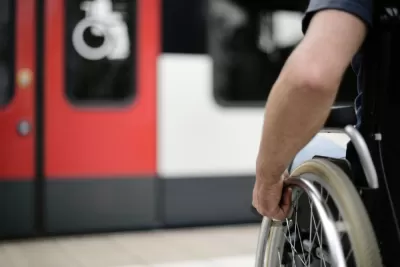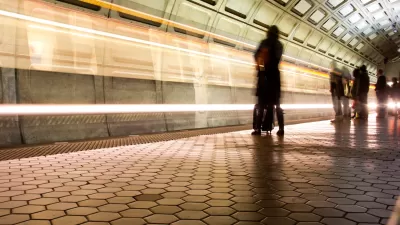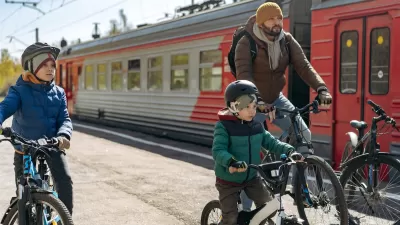Riders with disabilities say that vertical and horizontal gaps of as much as 7 inches between trains and platforms prevent many riders from safely entering and exiting trains.

A lawsuit filed by three disabled New York City transit riders calls on the Metropolitan Transportation Authority to close the gaps between platforms and trains that prevent many people using wheelchairs from safely accessing trains.
As Alissa Walker writes in Curbed, “The complaint argues that the MTA and the New York Transit Authority ‘have not formulated any kind of plan to address the gaps that prevent people with mobility and visual disabilities from using the subway,’ despite spending more than $100 billion on capital improvements to the system since 1982.”
While the agency has committed to installing elevators at more of its stations thanks to other recent lawsuits, repairing the vertical and horizontal gaps on platforms would make train travel safer for not just wheelchair users, but also people with visual impairments.
According to Walker, “Many transit agencies have what’s called universal-level boarding, where all train floors are completely flush with all platforms.” But “In New York, due to variables in rolling stock and station design, the MTA would have to standardize all its train platforms and train cars line by line in order to achieve this.”
The plaintiffs in the suit against MTA say that stair-free access isn’t enough to ensure universal accessibility. Other agencies are implementing temporary or permanent solutions such as retractable bridge plates, portable ramps, and universal platform doors.
FULL STORY: 7-Inch Platform Gaps Are Keeping Disabled Riders Off the Subways

Planetizen Federal Action Tracker
A weekly monitor of how Trump’s orders and actions are impacting planners and planning in America.

Congressman Proposes Bill to Rename DC Metro “Trump Train”
The Make Autorail Great Again Act would withhold federal funding to the system until the Washington Metropolitan Area Transit Authority (WMATA), rebrands as the Washington Metropolitan Authority for Greater Access (WMAGA).

The Simple Legislative Tool Transforming Vacant Downtowns
In California, Michigan and Georgia, an easy win is bringing dollars — and delight — back to city centers.

The Small South Asian Republic Going all in on EVs
Thanks to one simple policy change less than five years ago, 65% of new cars in this Himalayan country are now electric.

DC Backpedals on Bike Lane Protection, Swaps Barriers for Paint
Citing aesthetic concerns, the city is removing the concrete barriers and flexposts that once separated Arizona Avenue cyclists from motor vehicles.

In These Cities, Most New Housing is Under 441 Square Feet
With loosened restrictions on “micro-housing,” tiny units now make up as much as 66% of newly constructed housing.
Urban Design for Planners 1: Software Tools
This six-course series explores essential urban design concepts using open source software and equips planners with the tools they need to participate fully in the urban design process.
Planning for Universal Design
Learn the tools for implementing Universal Design in planning regulations.
Smith Gee Studio
City of Charlotte
City of Camden Redevelopment Agency
City of Astoria
Transportation Research & Education Center (TREC) at Portland State University
US High Speed Rail Association
City of Camden Redevelopment Agency
Municipality of Princeton (NJ)





























